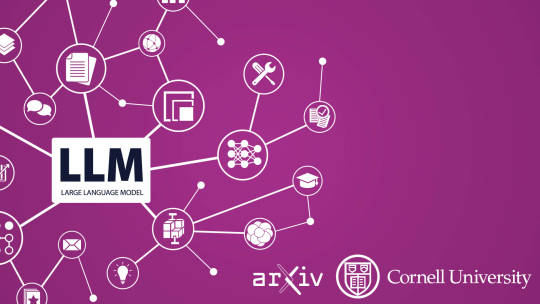#AItextdetection
Explore tagged Tumblr posts
Text
Large Language Model (LLM) AI Text Generation Detection Based on Transformer Deep Learning Algorithm

Overview of the Paper This white paper explores the use of advanced artificial intelligence (AI) techniques, specifically Transformers, to detect text that has been generated by AI systems like large language models (LLMs). LLMs are powerful AI models capable of generating human-like text, which can be used in various applications such as customer service chatbots, content creation, and even answering questions. However, as these AI models become more advanced, it becomes increasingly important to be able to detect whether a piece of text was written by a human or an AI. This is crucial for various reasons, such as preventing the spread of misinformation, maintaining authenticity in writing, and ensuring accountability in content creation. What Are Transformers? Transformers are a type of AI model that is particularly good at understanding and generating text. They work by processing large amounts of data and learning patterns in human language. This allows them to generate responses that sound natural and coherent. Imagine you’re having a conversation with someone online, but instead of a person, it’s an AI responding. The AI uses a Transformer model to predict the best possible response based on your input. This technology powers chatbots, virtual assistants, and other applications where machines generate text. Why Detect AI-Generated Text? As LLMs get better at mimicking human language, it becomes harder to tell whether something was written by a person or by a machine. This is particularly important for industries like news media, education, and social media, where authenticity and accountability are crucial. For example: - Fake News: AI-generated text could be used to spread false information quickly and efficiently. - Plagiarism: In education, students might use AI to generate essays, raising questions about originality and intellectual integrity. - Customer Interactions: Businesses need to ensure that AI is used responsibly when interacting with customers. The authors of this paper propose a solution: developing AI models that can detect AI-generated text with high accuracy. How Does the Detection Work? The detection system described in the paper uses the same AI technology that generates text—Transformers—but in reverse. Instead of producing text, the system analyzes a piece of text and tries to determine if it was generated by a human or an AI. To improve the accuracy of this detection, the researchers combined Transformers with two other AI techniques: - LSTM (Long Short-Term Memory): This is a type of AI model that is good at understanding sequences of information, like the structure of a sentence. It helps the system better understand the flow of the text. - CNN (Convolutional Neural Networks): Normally used in image recognition, CNNs help by breaking down text into smaller pieces and analyzing local patterns, such as word relationships. By combining these three techniques—Transformers, LSTM, and CNN—the detection system can identify patterns in AI-generated text that humans might miss. For example, AI-generated text might repeat certain phrases or use unusual word combinations that a human would likely avoid. Performance and Accuracy The detection model was tested on a wide variety of texts generated by different AI models. The results were impressive: - The model achieved 99% accuracy in identifying whether a piece of text was written by a human or an AI. - It was particularly effective at spotting texts generated by advanced AI systems like GPT-3, one of the most powerful LLMs available. This high level of accuracy makes the system a valuable tool for businesses, educators, and regulators who need to ensure that AI is being used responsibly. Real-World Applications The ability to detect AI-generated text has several important applications: - Education: Schools and universities can use this technology to check whether students are submitting original work or AI-generated essays. - Media: Journalists and editors can verify the authenticity of content before publishing it, ensuring that no fake news or misinformation is included. - Business: Companies that use AI chatbots to interact with customers can ensure that the responses are appropriate and don't mislead customers. - Legal & Compliance: Regulatory bodies can monitor AI-generated content to ensure it adheres to legal standards, especially in sensitive areas like finance or healthcare. Challenges and Future Directions While the model is highly accurate, there are still some challenges: - Evolving AI Models: As AI models become more advanced, they will get better at mimicking human language. This means that detection systems will need to evolve as well. - Data Quality: The accuracy of the detection system depends on the quality and diversity of the data it is trained on. The better the training data, the more effective the detection will be. In the future, the authors suggest that combining multiple AI detection models or using other techniques like blockchain for content verification could improve the reliability of detecting AI-generated text. Conclusion In an age where AI-generated content is becoming more prevalent, the ability to detect such content is essential for maintaining trust and accountability in various industries. The Transformer-based detection system proposed in this paper offers a highly accurate solution for identifying AI-generated text and has the potential to be a valuable tool in education, media, business, and beyond. By using a combination of advanced AI techniques—Transformers, LSTM, and CNNs—this model sets a new standard for AI text detection, helping to ensure that as AI continues to grow, we can still distinguish between human and machine-generated content. Read the full article
#AIgovernance#AItextdetection#AI-generatedcontent#contentauthenticity#deeplearning#largelanguagemodels#machinelearningdetection#misinformationdetection#NLP#TransformerAI
0 notes